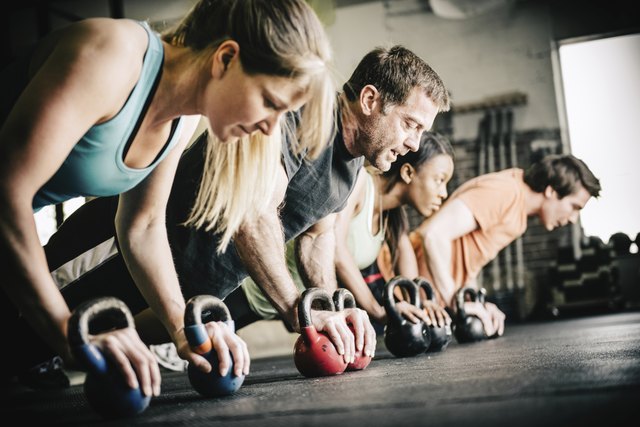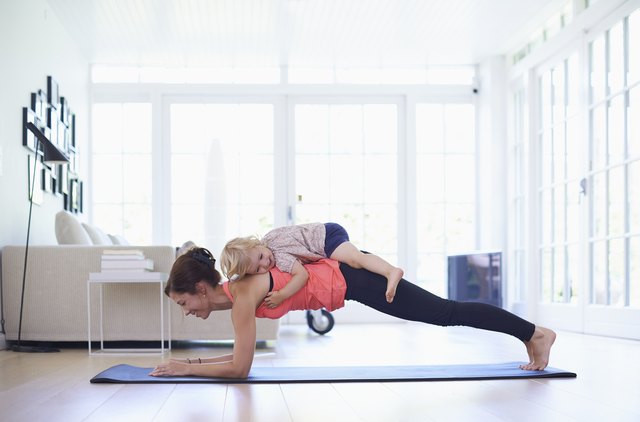Overview
Truth be told, not everyone loves running. Yes, there are people who swear by it and even talk about the runners’ high. But there are also plenty of people who find the activity boring, and some might even tell you that their doctor told them to avoid running to reduce stress on their knees. You’ve probably heard from the two camps, but the point of this article is not to convince you avoid running, but rather to give you an alternative to achieve your fat loss goals if running is not your thing. So, let’s talk about the benefits of bodyweight training, which is vastly underprescribed and underrated.
You may know about bodyweight training from hearing about its use in the Navy Seals or the increase of its popularity due to CrossFit. Coaches worldwide prescribe bodyweight training for a variety of purposes including athletic development, mobility work, stabilization work, strength training and muscle gains. In fact, if you’re part of the legions that are easily turned off by running, you’ll be glad to discover that bodyweight training can also be used as a greater replacement for steady-state cardio when it comes to reaching your fat loss goals — and it will bring more benefits to your body along the way.

If Running Is Not for You, It’s OK

In recent years, finding a suitable replacement for steady-paced running has been a huge topic of discussion in the fitness realm. Numerous testimonials — from people of all shapes and sizes — across internet forums express the boredom, the knee and ankle pain, and the struggle to progress towards their fat loss goals through running, which in turn has lead coaches to reach for alternatives.
Sohee Lee, a personal trainer at Peak Performance in Manhattan, New York, and certified strength & conditioning specialist — with an extensive personal background in running — says that an increasing number of professionals in the industry have stopped prescribing steady-state running to their clients because they find it to be ineffective as a weight loss tool.
“I’ve seen more bad come out of it than good,” Lee said. “The boredom, knee pain, and dreaded hatred for it are the main reasons why none of my clients are currently on a program that includes running.”
When tackled aggressively, running puts the body under a great amount of stress, exposing the athlete to risk of injury. This fact has been known for a long time. In fact, a review of epidemiological literature on running injuries — from as early as 1992 —conducted at the University of Amsterdam in the Netherlands, found that 50 to 75 percent of running injuries are caused to the lower extremities by constant repetition of the same movement — with a predominance to the knee. However, the risk of injury and risk of burning out increases due to the trainees pushing distance when a plateau in results is observed.
“Running did absolutely nothing for me in the way I was leaning out,” Lee said. “It made me neurotic and tired, and I found myself looking at exercise as another source of stress.”
The human body rapidly adapts to running, causing it to slowly decrease the energy required to tackle distances. In return, most runners start increasing the frequency and distance of their workout so they can burn the same amount of energy that they had previously used in the lower frequency range. Sadly, for some like Lee, doing so only results in nervous system burn out, and causes people to spend their days feeling drained and fatigued.
These days, Lee has completely removed running from her programs, and she recommends incorporating a bodyweight training circuit that lasts at least 10 minutes, up to 40 minutes, as an alternative to running to reduce the risk of injury, avoiding weight loss plateaus, and burning out from training.
Why Consider Bodyweight Training as an Alternative
Tom Robertson and John Thomas Anillio, certified strength and conditioning specialists, and Co-Directors of Training For Warriors — with 65 locations spread out through 13 different countries — believe that bodyweight training is advantageous due to its ability to influence the hormones and overall body improvements.
“You get more bank for your buck,” said John. “You can burn just as much fat, speed up your metabolism, and build quality muscle without even stepping foot onto a treadmill, using your body’s resistance alone.”
Besides reducing the risk for many dysfunctions of the body such as osteoporosis, lower back pain, type 2 diabetes and many others, research has shown that bodyweight circuits — metabolic resistance training — increase the secretion of a number of specific hormones. The secretion of hormones such as testosterone, human growth hormone and insulin growth factor-1 (igf-1) is far better when using bodyweight circuits than when you execute your everyday jog.
“It is one of the most efficient ways to increase your natural levels of body reconstructive hormones,” said Robertson. “Using bodyweight training will increase your body’s hormonal inputs that are responsible for losing fat, increasing your strength, build muscle, and improving your cardiac capacity — over-running simply trashes those.”
For those unaware, this particular hormonal increase is advantageous towards your fat loss battle by increasing your metabolism long term, which in return, will burn calories up to forty-eight hours after you’ve completed the workout.
Bodyweight Training Outside the Gym

Another advantage of bodyweight training comes from its accessibility and portability. It doesn't matter if you’re stuck at home, at a bus stop or in a hotel room while traveling, bodyweight training can be performed anywhere and under any conditions — weather is never a factor (or can be an extra training aid, if that's your thing to train under extreme conditions).
What’s more, you can use any piece of material, equipment or furniture you have access to to vary your exercises. For instance, you can use a chair for Bulgarian split squats and/or triceps dips, a kitchen counter for dips or a pipeline for pull-ups. With such endless possibilities, your creativity will be stimulated and take the boredom out of exercising with “just your body.”
“My dad hates gyms,” said Robertson. “At 62 years old, he bangs out sets of 10 chin-ups super-setted with 20 press-ups — and that was progressed from home training alone.”
Among the other invaluable advantages that bodyweight training provides, it greatly increases the quality of your life because of its functionality. Close-chain exercises such as push-ups, squats and pull-ups require the use of multiple joints in a natural pattern that result in greater motor unit activation and synchronization. Doing so, you will empower your day-to-day life through strength development, three-dimensional movement and greater kinetic awareness.
“Don’t skip the basics,” Anillio pointed out. “When the average person joins a gym, they either first go to the Treadmill or the Bench Press, but most can't even do a single push-up.”
Training For Warriors measures the client’s heart rate a couple of times during their sessions to calculate the intensity and recovery. According to Anillio, at Training For Warriors they have found that most of clients burn more calories during a dynamic bodyweight warm up than those people that simply jump on the treadmill.
Anillio and Robertson recommend the start-up of bodyweight trainings with simple basics — slowly progressed to advanced movements — in order to obtain the best of hormonal benefits, fat loss results, and overall life improvement.
Getting Started
In order to get you started with bodyweight training, below you will find a blueprint for designing your own bodyweight workout plus a workout sample you can freely use.
If you are to use the blueprint, select the exercises that are more taxing on your oxygen (e.g. the use of jump squats instead of traditional squats), perform them with proper form and then go at your own pace while keeping a challenging tempo. Execute the workout up to 3x a week to reap the maximal benefits. Keep in mind that it is advised to consult a physician before beginning any exercise plan.
METHODOLOGY
Perform A1-A8 with little to no rest in between exercises. Rest and sets depend on the level. Use 65-80 percent of your rep max for each exercise.
A1- Upper-body exercise (push-up variations, dips, etc..)
A2- Lower-body exercise (squat variations, lunges, etc..)
A3- Resting cardio exercise (running in place, invisible jump rope, etc..)
A4- Core activation exercise (plank variations, crunches, etc…)
A5- Lower-body exercise (squat variations, lunges, etc..)
A6- Upper-body exercise (push-up variations, dips, etc..)
A7- Core activation exercise (plank variations, crunches, etc…)
A8- Resting cardio exercise (running in place, invisible jump rope, etc..)
BEGINNERS: 2-3 sets with 60-75 second breaks in between sets
INTERMEDIATE: 3-4 sets with 30-45 second break in between sets
ADVANCED: 5 sets with 15-25 second break in between sets
WORKOUT SAMPLE
Perform A1-A8 with little to no rest in between exercises. Rest and sets depend on the level.
A1- Close-Grip Push-Up: 10-12 reps
A2- Squat Hops: 15 reps
A3- Invisible Jump Rope: 30 seconds
A4- Mountain Climbers: 30 seconds
A5- Bulgarian Split Squats: 14 reps per leg
A6- Hand Walkouts: 6 reps
A7- Push-Up Position Plank: 15-30 seconds
A8- Jumping Jacks: 35 reps
BEGINNERS: 2-3 sets with 75 second breaks in between sets
INTERMEDIATE: 3-4 sets with 45 second break in between sets
ADVANCED: 5 sets with 25 second break in between sets
www.livestrong.com




No comments:
Post a Comment